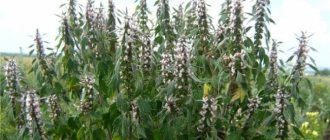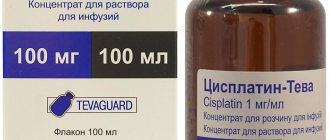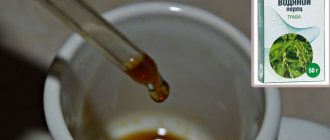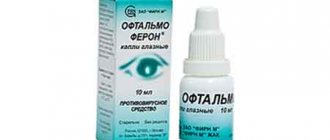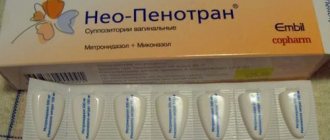What is celandine
Celandine is a perennial herbaceous plant belonging to the poppy family. Widely distributed in the temperate climate of Eurasia. Typically grows throughout Europe with the exception of northern Scandinavia and Iceland. This plant can also be seen in the Canary Islands, Madeira, Morocco, northern Algeria, New Zealand and North America. The southern border of the celandine's range passes through Turkey, Iran, Kazakhstan and southern China. And the easternmost point where this grass grows is called the Japanese islands. As a rule, it grows along roads, on the outskirts of damp forests, especially beech and hornbeam. Often found in gardens and parks. Celandine loves fertile soil enriched with humus. And around the 16th century in Europe, celandine was grown as an ornamental plant.
Content:
- What is celandine
- Chemical composition and beneficial properties
- Benefits for the body
- Use in folk medicine
- Use in cosmetology
- How to prepare correctly
- Daily norm and dosage
- Contraindications
- How else can you use it?
This is a small plant, it rarely grows higher than 75 cm. Its light green leaves are divided into 5-7 oval-shaped segments. The underside is slightly fuzzy. The first yellow flowers (up to 2 cm in diameter) appear on the bushes in the spring and do not disappear until the beginning of autumn. When the grass fades, narrow elongated “capsules” with black shiny seeds are visible on it. In places where the stem is damaged, orange-yellow juice oozes, which is both poison and medicine. It is because of this juice that the plant is popularly called yellow milkweed, yellow milkweed, and devil's milk. Although other names are also known, for example, swallow grass (appears at about the same time when swallows arrive, and the Latin name translates as “swallow”), warthog (removes warts), cape grass (grows near fences), nutcracker (ripe seed pods snap) or cleansing herb (cleanses the skin of lichen).
Interestingly, in ancient times, celandine was considered a magical plant. In Rus', for example, they believed that this herb accumulated the power of fire and protected from evil. It was customary to carry the leaves of this plant with you, wrapped in burlap, for good luck and to protect against unfair accusations.
Effective fight against warts
Every person will agree that growths on the skin are very unpleasant, but harmless manifestations that are of viral origin. The external shape of warts resembles small papillae. Treatment of such neoplasms can be complicated by the fact that the growths tend to increase in size. Celandine extract has proven itself to be effective in the fight against warts.
The very principle of treatment is based on the regular use of universal milk from the stems and leaves of a perennial plant. The instructions for the product indicate that problematic growths should be carefully treated until they fall off on their own. If you have the opportunity to independently obtain fresh celandine milk, then you can achieve a greater effect. The product only treats warts, but not the skin around them, as this can cause a burn to the skin.
Traditional healers recommend preparing your own ointment, which has many benefits. To prepare such a remedy, you need to take a tablespoon of Vaseline, the same amount of freshly squeezed celandine juice and a teaspoon of carbolic acid. You can also use dry, crushed grass. If the skin is too sensitive, then Vaseline can be replaced with high-quality baby cream, animal fat or massage oil.
Many owners of country plots store celandine juice for future use. The green mass can be ground in a meat grinder. Leave the finished pulp for four days in a dark place. During this time, healthy juice will separate from the cake, which can be squeezed out through ordinary gauze. Experts say that one bucket of chopped grass produces 1.5-1.7 liters of juice.
Chemical composition and beneficial properties
Celandine juice contains a large number of alkaloids (almost 20 types). Their concentration in leaves and stems ranges from 0.5 to 1.5%, but the maximum amount of these substances is in the roots (up to 3-4%). In addition, celandine juice is rich in carotenes, ascorbic acid, essential oils, organic acids, tannins, phenolic compounds, flavonoids, choline, lectins, glycogen, pectin, various enzymes and other useful chemical compounds.
Most of the medicinal properties of celandine are determined by the alkaloids contained in the plant. One of the most powerful effects of celandine is relaxation of smooth muscles. That is, the plant extract affects the gastrointestinal tract, gall bladder, ureter, uterus, promoting the outflow of bile and active excretion of urine, eliminating constipation and menstrual pain.
Chelerythrine and sanguinarine contained in the stems have antiviral and bactericidal activity (including useful for getting rid of staphylococci and streptococci). And chelidonine acts on the nervous system like morphine, but does not cause euphoria (only anesthetizes).
The juice also contains a substance that blocks the proliferation of the papilloma virus and prevents the growth of warts.
In addition, the alkaloids contained in the plant are useful for protecting against viruses, have antitumor activity, antimicrobial, analgesic, sedative, diuretic, and anti-inflammatory properties.
Benefits for the body
Today, celandine is used mainly to treat the liver, spleen, gall bladder, kidneys, intestines, and some lung diseases. In addition, homeopathic preparations based on this herb are prescribed to people for gallstone disease and hepatitis. Next we’ll talk about the most famous and best studied properties of the plant.
Protection for the liver and gallbladder
Celandine contains substances that help cleanse the liver. This plant is useful for detoxifying the body. It has natural protective properties that not only help maintain proper liver health and performance, but also protect cells from damage. Celandine extract reduces inflammatory processes in the organ, it is useful for treating fibrosis and preventing toxic hepatitis. Celandine stimulates the functioning of the gallbladder, the dysfunction of which is known to cause various diseases, including indigestion. Clinical studies have confirmed the effectiveness of the herb for treating gallbladder inflammation. But before starting herbal medicine, it is important to consult a doctor.
Improves digestion
Celandine is useful to take for disorders of the digestive system. This herb relieves abdominal cramps, bloating, and alleviates indigestion. It helps the body produce more bile and other digestive enzymes responsible for efficiently digesting food. Some studies indicate that celandine extract is useful for treating stomach ulcers, irritable bowel syndrome and some chronic gastrointestinal diseases.
Treats eczema
The juice of the plant is traditionally used to treat many skin diseases, including atopic dermatitis. In 2011, scientists conducted an experiment, the result of which indicated that celandine juice is useful for treating eczema. This experiment was conducted on rats, but still proved the plant's ability to reduce the symptoms of eczema, including inflammation and itching.
Tinctures of celandine have been used for centuries to treat many skin conditions, including ringworm, calluses and warts.
Antimicrobial agent
Celandine is effective against diseases of the gums and teeth caused by bacteria. Laboratory experiments have shown that the plant extract has powerful antibacterial activity against several strains of bacteria, including streptococci. Researchers suggest that the antimicrobial abilities of celandine are associated with the substance chelerythrine contained in the plant. Other studies have confirmed the herb's effectiveness against the herpes simplex virus.
Anticancer agent
Celandine has anti-cancer properties. At one time, a study was conducted with the participation of patients with different types of cancer. Each participant in the experiment received a certain portion of celandine extract. It turned out that under the influence of the herbal medicine, the proliferation of cancer cells slows down and the survival rate of patients with cancer increases. Although, to be fair, it is worth noting that not all researchers agree that celandine is really so effective for treating cancer. At one time, the drug “Ukrain” for the treatment of cancer was made from celandine extract. But later, many researchers doubted its effectiveness, and in many countries this medicine was completely banned due to its dangers. But on the other hand, no one can deny that celandine contains substances that have antioxidant activity, which is also a protective factor against cancer.
Removes warts
Modern science has confirmed that celandine juice is an effective medicine against warts and papillomas. But these plant abilities have been known to man for more than a century. In ancient times, people knew that if you regularly apply orange celandine juice to a wart, sooner or later it will disappear. Today, many scientists confirm the effectiveness of such a folk remedy, but at the same time remind: you should not apply the herb juice to healthy areas of the skin (burns are possible).
For this treatment, you should break a branch of a fresh plant and wait until a drop of juice appears, then apply it to the wart. If it is not possible to obtain fresh celandine juice every day, you can prepare medicinal vinegar. To do this, pour 10 g of fresh plant with a glass of vinegar and leave for a month in a glass container (keep in a dark place, shake the jar with the contents every 3 days). The resulting product is useful for moistening warts.
Other benefits of celandine
- antifungal agent;
- relieves spasms;
- treats arthritis and gout;
- treats diseases of the genitourinary system;
- has analgesic properties;
- reduces blood pressure;
- useful for tuberculosis.
Symptoms of poisoning
Celandine poisoning can be acute or chronic. Chronic poisoning occurs with prolonged use of a relatively small amount of celandine orally. Symptoms are usually less pronounced than with acute poisoning, but this makes it no less dangerous. The body's reaction to poisoning also depends on age; in children, intoxication is more severe.
Signs of celandine poisoning:
- nausea, vomiting;
- diarrhea, accompanied by severe intestinal cramps and flatulence;
- mydriasis (dilated pupils);
- heart rhythm disorders (tachycardia, arrhythmia);
- increased sweating (cold sweat);
- difficulty breathing, shortness of breath, cough;
- pale skin;
- fasciculation (muscle twitching);
- convulsions;
- loss of consciousness, coma.
Death occurs due to developed heart failure.
Signs of toxic effects of celandine when applied topically:
- dermatitis at the site of application of celandine (contact dermatitis);
- redness, rashes and blisters.
Source: depositphotos.com
Use in folk medicine
Best materials of the month
- Coronaviruses: SARS-CoV-2 (COVID-19)
- Antibiotics for the prevention and treatment of COVID-19: how effective are they?
- The most common "office" diseases
- Does vodka kill coronavirus?
- How to stay alive on our roads?
In European and Chinese folk medicine, celandine has been used for many centuries. Soon after the plant was brought to North America, the Indians also began to use it as a medicine. In Ancient Greece and Rome, swallow grass was used to get rid of intestinal parasites and reduce body temperature, and in medieval Europe, the juice of the plant was used to treat jaundice and other liver diseases. By the end of the 19th century, when researchers learned much more about the chemical composition of the plant, its scope of application expanded significantly. And already in the twentieth century, different countries began cultivating this herb.
In Russia and the Baltic countries, celandine is known primarily as a herbal medicine for cleansing the body. In Latin American countries, this plant has been used since ancient times to treat the liver, stomach disorders, gallbladder diseases, hepatitis and skin diseases. In Asia, this herb is famous as an anti-inflammatory agent. Medicines from this plant were used to treat bronchitis, whooping cough, and also to remove toxins. At different times in European countries, celandine was used to cleanse the blood, treat jaundice, and remove stones from the liver and gall bladder. In the old days, toothache was also treated with celandine (the leaves were applied to the sore tooth), and powder from the dried plant was poured onto wounds to speed up their healing.
Young shoots are used in herbal medicine in the form of decoctions, aqueous or alcoholic extracts. Celandine in this form is especially useful for the kidneys, liver, bile ducts, treatment of rheumatism, intestinal colic, abdominal pain, migraines, swelling. Infusions and tinctures of celandine are antispasmodic, diuretic, choleretic, analgesic, sedative, antiallergic, antiviral, antifungal agent.
The juice of the plant today is used only externally (to remove warts, condylomas, papillomas, corns, calluses, fungi, psoriasis, to cauterize herpes and polyps). An alcoholic tincture of the herb is used in folk medicine to strengthen the immune system and prevent cancer.
Use in cosmetology
Our grandmothers, it seems, knew how to make a beauty product from every herb. Celandine was also included in the list of herbs beneficial for hair and face. Women regularly rinsed their hair with a decoction of this plant to give it a beautiful shine, stimulate growth, and also to get rid of dandruff. It is also useful to wipe the facial skin with the same decoction, especially problematic skin (with acne, pustules, inflamed areas).
Mask for problem skin
Mix a teaspoon of peach or olive oil, one yolk, a little oatmeal and 10 drops of celandine juice. Keep on face for 5 minutes. Use no more than once a week. This product is useful for lightening age spots and treating acne.
Mask for oily skin
Prepare a mixture of 2 teaspoons of sour cream, 1 teaspoon of green clay and the same amount of celandine juice. Apply to cleansed facial skin and leave for 15 minutes. This mask is useful for regulating the sebaceous glands, preventing and treating acne.
Methods for removing papillomas
You can get rid of warts using surgical treatment, chemical methods, medications, etc. Currently, there are a lot of such methods. We list the most common and popular ones:
- Laser removal is a rather expensive procedure.
- Removal using liquid nitrogen is a painful and unpleasant procedure, after which relapses may occur in the place where liquid nitrogen acted. There may also be marks left on the skin.
- Chemical methods - products that can be purchased at the pharmacy are used: phenol and metacresol ( Verrukatsid ), potassium and sodium hydroxide ( SuperChistotel ), propane and dimethyl ether ( Wartner Cryo , Cryopharma ), oxalic, nitric, lactic, acetic acids ( Solcoderm ) .
- Celandine herb - the healing properties of this plant make it possible to effectively fight warts.
However, even if a person seeks to remove papillomas using traditional methods, not wanting to use medications or other methods offered by modern medicine, he still needs to visit a doctor. It is important that the specialist conducts an examination and the necessary research and makes sure that it is a papilloma and not an oncological formation. After all, malignant tumors can develop in a person at any age, and in order to promptly cure the disease, it must be diagnosed as early as possible.
How to prepare correctly
The above-ground part of the plant and its root are used for medicinal purposes. Greens are harvested in May-June; besides, it is better to collect only young shoots. It is advisable to dry the leaves and stems at a temperature of 30-60° C separately from other plants. The roots are dug up in autumn or early spring and dried at a temperature not exceeding 60° C. Store dried raw materials in hermetically sealed packaging, protecting them from moisture. From 6 kg of fresh leaves and roots you will get approximately 1 kg of dry raw materials.
Drug interactions
When used internally, celandine is incompatible with the following groups of drugs:
- medicines based on digitalis (digitalis);
- morphine-containing drugs;
- sulfonamides;
- drugs that lower blood sugar.
Externally, celandine cannot be combined with drugs and compositions that have similar effects. For example, you cannot use plant juice and liquids based on sodium hydroxide or potassium hydroxide at the same time to cauterize warts.
Author:
Sabuk Tatyana Leonidovna hygienist, epidemiologist
Daily norm and dosage
Researchers say that you should not consume more than 12-30 mg of alkaloids per day, that is, no more than 2-5 g of dry celandine herb.
A safe decoction of celandine is prepared from half a tablespoon of the herb and a glass of hot water (the mixture is steamed for 30 minutes). Take this infusion no more than three times a day and no more than 2 tablespoons (can be diluted in a glass of water).
When using celandine juice externally, it is important that it does not get into the eyes, as it causes a strong burning sensation and can damage the mucous membrane.
Treatment
Treatment for severe celandine poisoning is carried out in a hospital setting. It is based on restoring cardiovascular activity, eliminating vascular and heart failure, and cleansing the body of poison. The victim, if he has not regained consciousness, continues to be brought to his senses.
- artificial ventilation
In the absence of spontaneous breathing, mechanical ventilation (artificial pulmonary ventilation) is performed.
- Medications are used to increase blood pressure and normalize heart function.
- If convulsive syndrome is present, then there is a need for anticonvulsant drugs.
- Forced diuresis is performed to accelerate the removal of poison from the body, for which large volumes of fluid and diuretics are administered.
All victims must be hospitalized, where intensive care continues.
Contraindications
Celandine and preparations containing herbal extract should not be taken during pregnancy as they stimulate uterine contractions. The plant is prohibited for stomach ulcers, acute catarrh of the gastrointestinal tract, asthma, epilepsy, and patients with angina pectoris. It is important to know that celandine contains compounds that cause drowsiness.
Overdoses of celandine provoke dyspepsia, nausea, constipation, lethargy, dryness and burning in the mouth, headaches, dizziness, disturbances of consciousness, convulsions, and sometimes even paralysis. Although this herb is used to treat the liver, an overdose can, on the contrary, damage the organ. You should not use celandine for longer than 2 months.
Indications for use
Please note that all forms of the plant for internal use should be used carefully, monitoring the body’s reaction and after consulting with your doctor. Plants are poisonous!
Indications for the use of celandine are:
- diseases of the gallbladder and liver associated with stagnation of bile, intestinal sluggishness, chronic diseases of the stomach, kidneys, (not exacerbation)
- rheumatism
- inflammatory processes of the oro- and nasopharynx, urinary tract
- hypertension
- oncological diseases
- psoriasis, eczema, fungal infections of nails and skin
- acne, warts, papillomas, condylomas
The medicinal properties of celandine have found application in the treatment of neuroses and depressive conditions.
